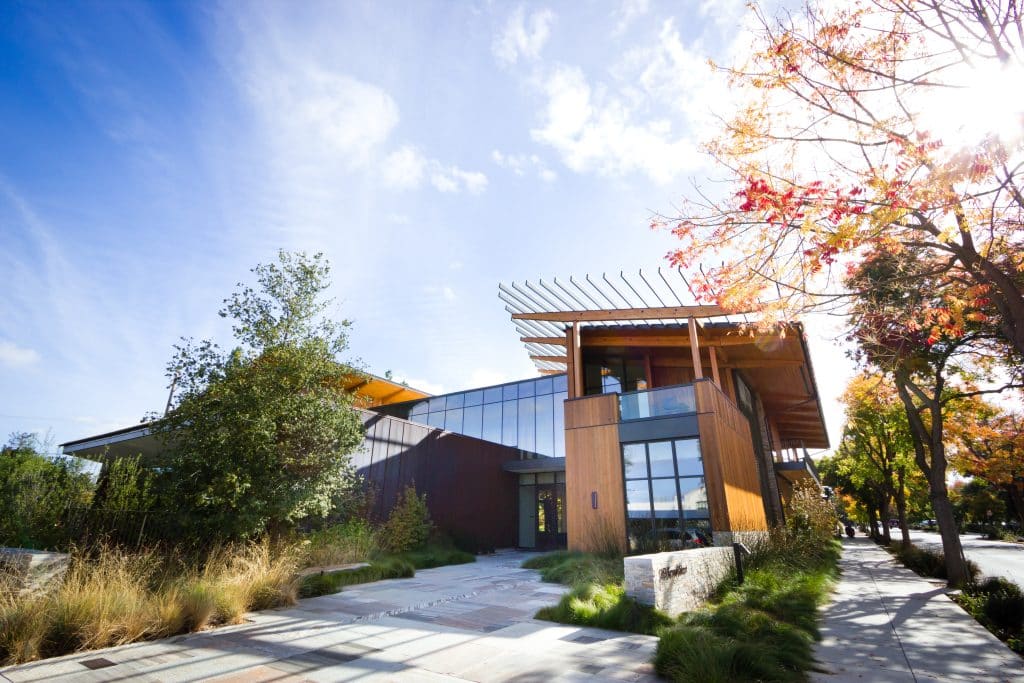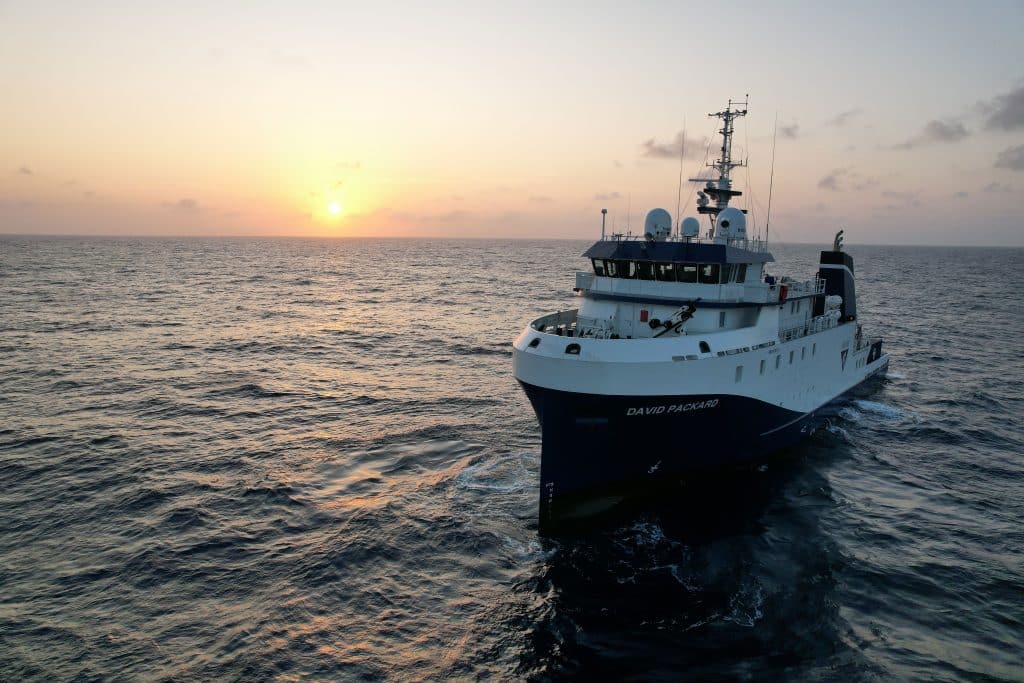Climate change is one of the most pressing challenges of our time. At the Packard Foundation, addressing this crisis is one of our highest priorities and we know that decisive action must be taken to avoid the most significant impacts. Over the last 16 years, this has driven our investment of more than $1 billion in grantee partners working to mitigate climate change.
To limit the harmful effects of the climate crisis, we need to invest in a range of solutions. Through the years, we have focused on reversing tropical deforestation while delivering just and sustainable development for communities; phasing out fossil fuels and harmful biofuels; supporting innovative leaders working on bold approaches to reduce greenhouse gases and address the climate crisis; and investing in ocean-based climate solutions.
As we continue to invest in high impact climate solutions, it is critical that our own actions align with the future we’re working toward. Building on our long-term effort to reduce our own footprint, we’re announcing a new milestone — our commitment to achieving net zero carbon emissions of our organizational operations by 2040.
In Pursuit of Sustainability
Reaching net zero carbon emissions for any organization is no small feat. For us, it is the next step in a series of actions we have taken to lessen our carbon footprint over the years.
In 2007, we set a goal to reduce our carbon emissions by 15 percent by 2020. This number was inspired by California’s Global Warming Solutions Act (AB32) which required a reduction of the state’s emissions by 15 percent. While AB32’s requirements were not mandated by the state for the Packard Foundation, we felt that it represented an appropriate target for us.
To understand our baseline, we partnered with The Climate Registry, a credible carbon reporting organization to help us track and reduce our pollution.
It was vital for us to address our environmental impact as a whole, not just the factors that would affect our carbon footprint. We upgraded servers and computer equipment to use less power, resulting in a reduction in electricity usage. Starting in 2007, we enforced composting and recycling throughout our buildings. Today, we don’t allow single-use plastic at events or in our staff kitchens; we only serve seafood that is sustainably harvested; and we no longer serve beef due to the high greenhouse gas emissions associated with its production.
In 2012, we opened our new Packard Foundation headquarters in Los Altos, California, which has been the biggest step thus far in reducing our footprint. Inspired by California’s climate and natural surroundings, the building was designed to integrate sustainability into every aspect of its construction and operation. Materials were carefully selected to minimize the amount of carbon released during its lifecycle, and 95% of construction materials were recycled off-site.
Everything from the heating and cooling systems, ventilation, lighting, and plug loads was created with a low energy load in mind. This brought the energy demand down by about 50% and the remaining power is supplied by an onsite solar photovoltaic system.
Within the first year of occupancy, the building was officially operating at net zero energy and generating more power than it needed. The unused electricity is returned to the Los Altos power grid. In 2013, the Packard Foundation headquarters building became the largest building to date to receive Net Zero Energy Building Certification through the International Living Future Institute and is certified LEED Platinum.
As we’ve worked to further reduce our emissions, our staff’s commutes and business travel are the largest contributors to our carbon footprint. In 2020, due in part to curtailed travel and work from home policies during the COVID-19 pandemic, we met and surpassed our goal of reducing our overall emissions by 15%.
Post-pandemic, we transitioned to a hybrid work schedule. To reduce our commuter footprint, we provide transport shuttles for employees traveling from San Francisco and Oakland, and encourage others to drive electric vehicles or use public transportation.
We consider domestic and international travel to be essential for our work as we operate as a global Foundation. But we are thoughtful about when it is necessary and encourage remote meetings whenever possible.
Addressing Our Impact
While we have taken great steps to reduce our carbon footprint, our actions alone haven’t gotten us to zero. Each year from 2014-2021, we purchased carbon offsets through the Bonneville Environmental Foundation to mitigate our footprint. Then, in 2022, we shifted primarily to purchasing carbon capture through Climeworks, a high-quality carbon removal company that filters CO2 directly from the air and stores it underground using a process called direct air capture using renewable energy.
It’s important to acknowledge that carbon offsets and carbon capture alone are not comprehensive solutions to the climate crisis. Many carbon offset programs have faced scrutiny for their limited effectiveness and harmful impact on communities. So, through our grantmaking, we are invested in ensuring that carbon offset programs uphold high environmental integrity and safeguard community rights.
Additionally, the ability to purchase offsets and even carbon capture should not be an excuse for polluters to not have to significantly reduce their overall emissions.
For our own use, after rigorous discussion and evaluation, the Board of Trustees determined that carbon capture is an appropriate short-term method for addressing our carbon footprint and lessening our impact on the natural world. Carbon capture is not perfect—it’s expensive, energy intensive, and its long-term effects on the environment are unknown. But the need to address carbon emissions now is critical to avoid the most catastrophic and imminent impacts of climate change
Climate solutions is a dynamic field, and our approach has evolved over time as we strive to enable positive environmental impacts and safeguard community well-being. We will continue to evaluate the effectiveness and impact of carbon capture and adjust as appropriate.
Looking Forward to Net Zero
Operating at net zero is important for our values as a Foundation and is aligned with our vision for a just and equitable world where people and nature flourish.
The climate crisis demands ambitious goals grounded in science and inclusive of those most affected by the crisis to reduce fossil fuels. We’ve been working on climate solutions since 2008, and we know there is more work to do. Our net-zero commitment emphasizes our priority to reduce emissions now, with the tools available to us today, as well as innovate toward continued reductions in the future.








